Chromatin accessibility dynamics dictate renal tubular epithelial cell response to injury
- PMID: 36443310
- PMCID: PMC9705299
- DOI: 10.1038/s41467-022-34854-w
Chromatin accessibility dynamics dictate renal tubular epithelial cell response to injury
Abstract
Renal tubular epithelial cells (TECs) can initiate an adaptive response to completely recover from mild acute kidney injury (AKI), whereas severe injury often leads to persistence of maladaptive repair and progression to kidney fibrosis. Through profiling of active DNA regulatory elements by ATAC-seq, we reveal widespread, dynamic changes in the chromatin accessibility of TECs after ischemia-reperfusion injury. We show that injury-specific domains of regulatory chromatin become accessible prior to gene activation, creating poised chromatin states to activate the consequent gene expression program and injury response. We further identify RXRα as a key transcription factor in promoting adaptive repair. Activation of RXRα by bexarotene, an FDA-approved RXRα agonist, restores the chromatin state and gene expression program to protect TECs against severe kidney injury. Together, our findings elucidate a chromatin-mediated mechanism underlying differential responses of TECs to varying injuries and identify RXRα as a therapeutic target of acute kidney injury.
© 2022. The Author(s).
Conflict of interest statement
The authors declare no competing interests.
Figures
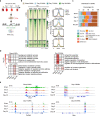
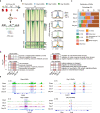


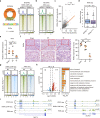
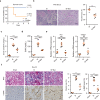

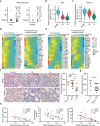
Similar articles
-
Lineage Tracing and Single-Nucleus Multiomics Reveal Novel Features of Adaptive and Maladaptive Repair after Acute Kidney Injury.J Am Soc Nephrol. 2023 Apr 1;34(4):554-571. doi: 10.1681/ASN.0000000000000057. Epub 2023 Jan 13. J Am Soc Nephrol. 2023. PMID: 36735940 Free PMC article.
-
Transient upregulation of EGR1 signaling enhances kidney repair by activating SOX9+ renal tubular cells.Theranostics. 2022 Jul 11;12(12):5434-5450. doi: 10.7150/thno.73426. eCollection 2022. Theranostics. 2022. PMID: 35910788 Free PMC article.
-
Chemokine CCL2 from proximal tubular epithelial cells contributes to sepsis-induced acute kidney injury.Am J Physiol Renal Physiol. 2022 Aug 1;323(2):F107-F119. doi: 10.1152/ajprenal.00037.2022. Epub 2022 Jun 6. Am J Physiol Renal Physiol. 2022. PMID: 35658715
-
[The role of macrophage polarization and interaction with renal tubular epithelial cells in ischemia-reperfusion induced acute kidney injury].Sheng Li Xue Bao. 2022 Feb 25;74(1):28-38. Sheng Li Xue Bao. 2022. PMID: 35199123 Review. Chinese.
-
Metabolic Flexibility and Innate Immunity in Renal Ischemia Reperfusion Injury: The Fine Balance Between Adaptive Repair and Tissue Degeneration.Front Immunol. 2020 Jul 7;11:1346. doi: 10.3389/fimmu.2020.01346. eCollection 2020. Front Immunol. 2020. PMID: 32733450 Free PMC article. Review.
Cited by
-
Maternal high-fat diet exacerbates atherosclerosis development in offspring through epigenetic memory.Nat Cardiovasc Res. 2025 Apr;4(4):362-379. doi: 10.1038/s44161-025-00622-4. Epub 2025 Mar 14. Nat Cardiovasc Res. 2025. PMID: 40087523
-
To Break or Not to Break: The Role of TOP2B in Transcription.Int J Mol Sci. 2023 Sep 30;24(19):14806. doi: 10.3390/ijms241914806. Int J Mol Sci. 2023. PMID: 37834253 Free PMC article. Review.
-
Epigenetic reprogramming driving successful and failed repair in acute kidney injury.bioRxiv [Preprint]. 2024 Jan 23:2024.01.20.576421. doi: 10.1101/2024.01.20.576421. bioRxiv. 2024. Update in: Sci Adv. 2024 Aug 9;10(32):eado2849. doi: 10.1126/sciadv.ado2849. PMID: 38328130 Free PMC article. Updated. Preprint.
-
Loss of p300 in proximal tubular cells reduces renal fibrosis and endothelial-mesenchymal transition.EMBO Mol Med. 2025 Jul;17(7):1575-1598. doi: 10.1038/s44321-025-00243-1. Epub 2025 Jul 1. EMBO Mol Med. 2025. PMID: 40588562 Free PMC article.
-
Identifying key genes related to the peritubular capillary rarefaction in renal interstitial fibrosis by bioinformatics.Sci Rep. 2023 Nov 10;13(1):19611. doi: 10.1038/s41598-023-46934-y. Sci Rep. 2023. PMID: 37949939 Free PMC article.
References
Publication types
MeSH terms
Substances
LinkOut - more resources
Full Text Sources
Molecular Biology Databases

